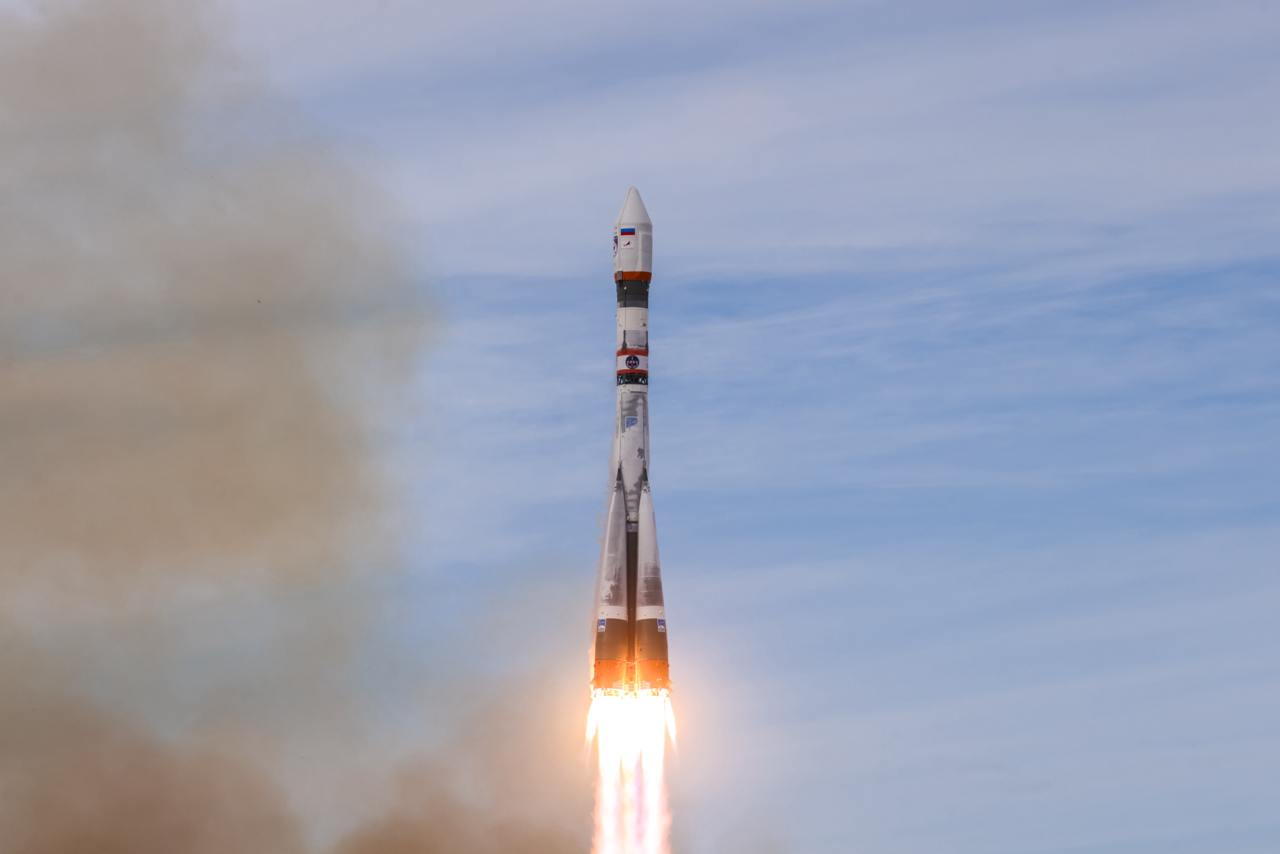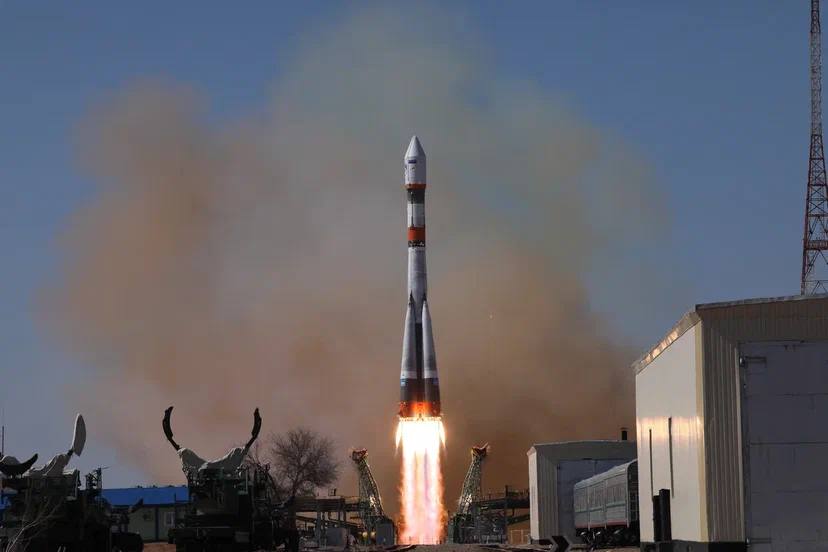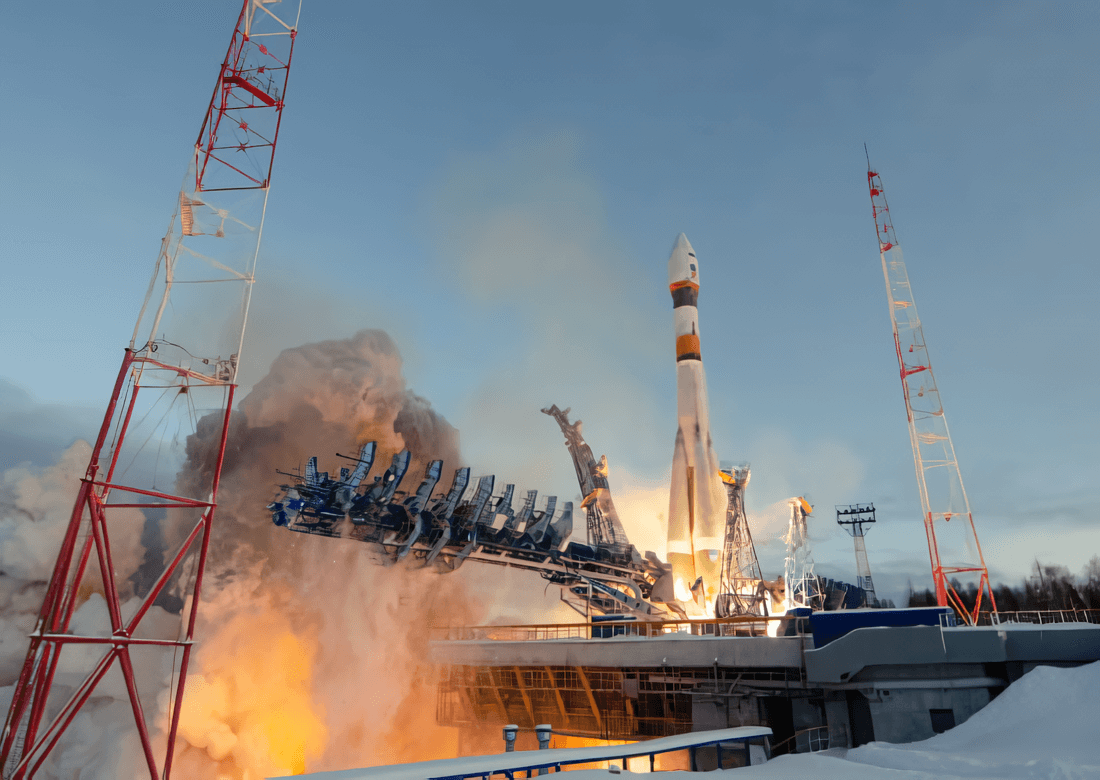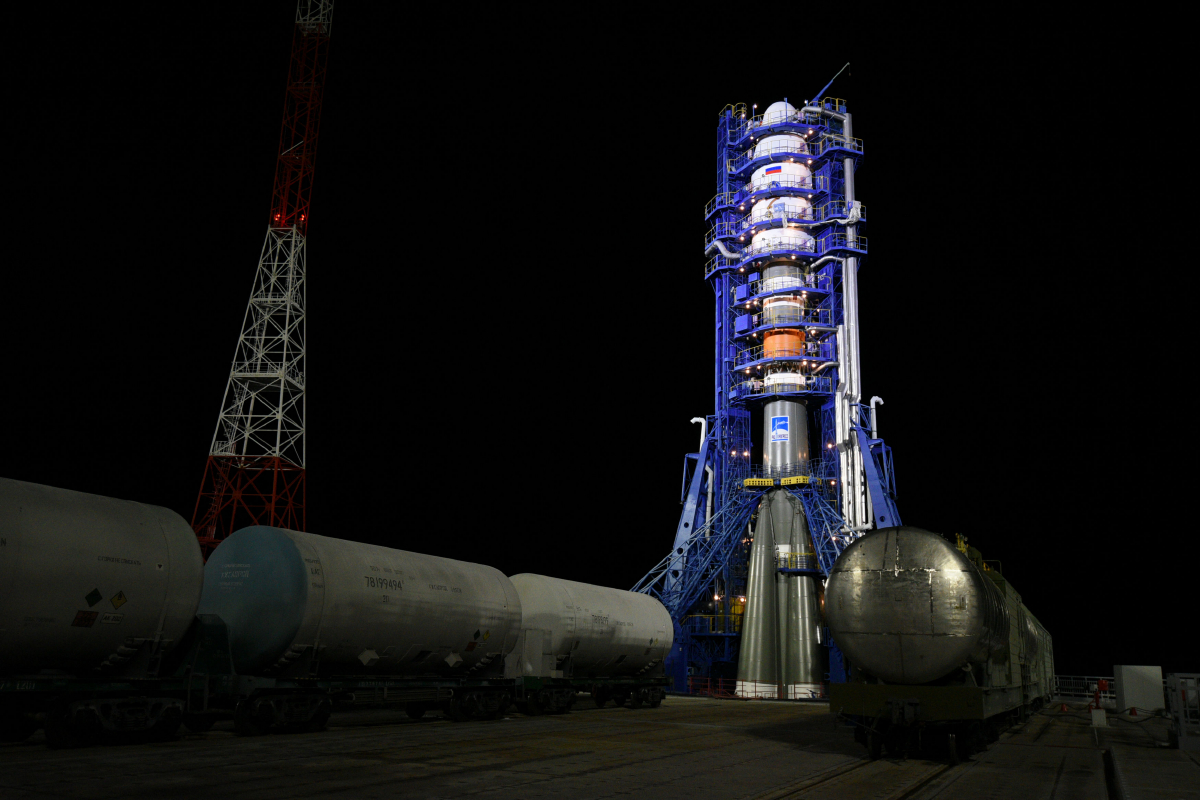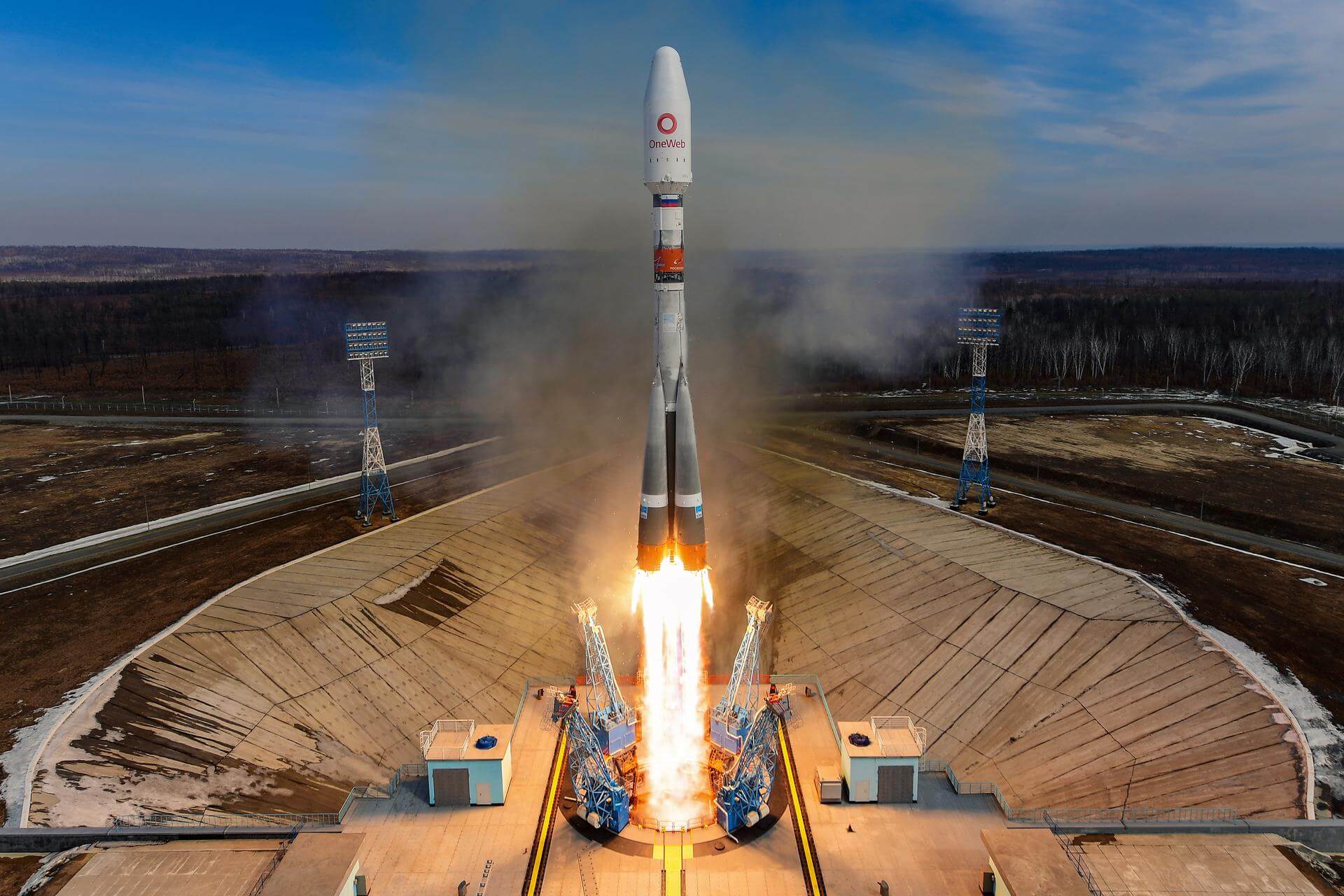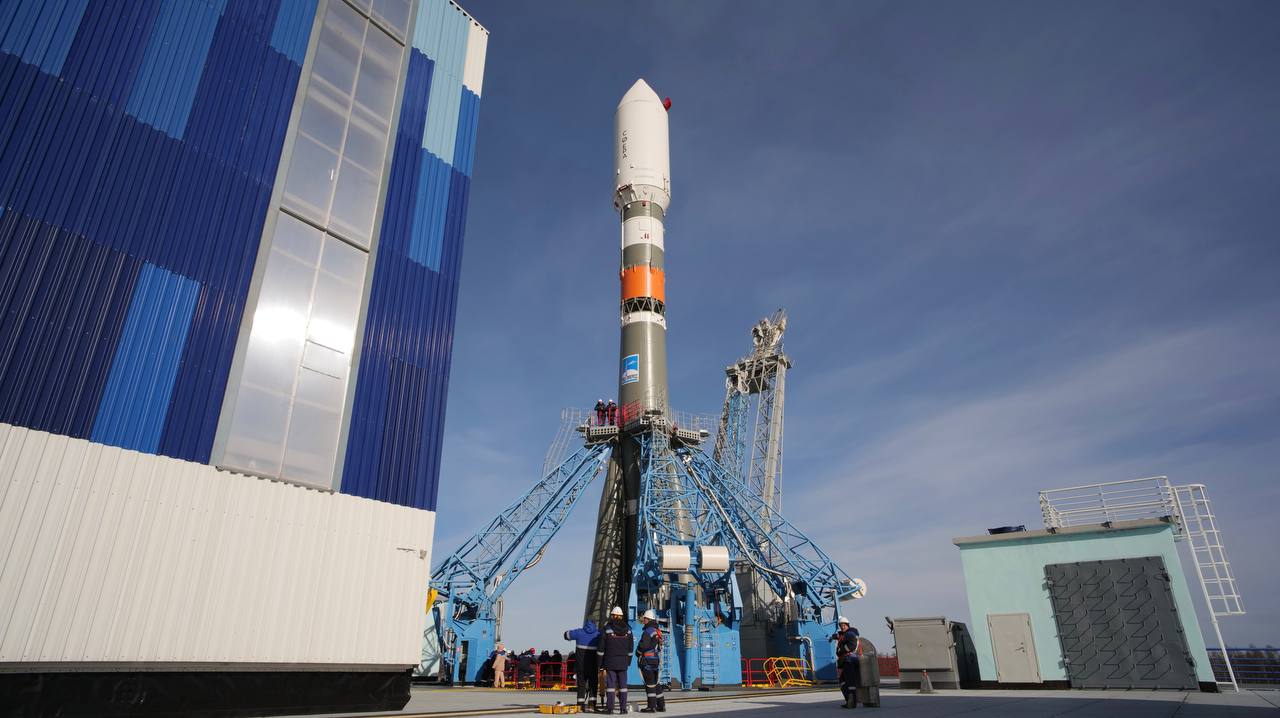
Soyuz 2.1b
ActiveProgress Rocket Space Center (PRSC)
July 26, 2008
Description
Soyuz-2 is the 21st-century version of the Russian Soyuz rocket. In its basic form, it is a three-stage carrier rocket for placing payloads into low Earth orbit. The 2.1b version adds an upgraded engine (RD-0124) with improved performance to the second stage.
Specifications
-
Minimum Stage
2 -
Max Stage
3 -
Length
46.3 m -
Diameter
2.95 m -
Fairing Diameter
― -
Launch Mass
312.0 T -
Thrust
―
Family
-
Name
Soyuz 2.1b -
Family
― -
Variant
― -
Alias
― -
Full Name
Soyuz 2.1b
Payload Capacity
-
Launch Cost
$80000000 -
Low Earth Orbit
8200.0 kg -
Geostationary Transfer
Orbit
3250.0 kg -
Direct Geostationary
― -
Sun-Synchronous Capacity
4900.0 kg
Progress Rocket Space Center
Commercial
CEO: Dmitry Baranov
PRSC 1996Progress Rocket Space Centre, formerly known as TsSKB-Progress, is a space science and aerospace research company which is known for manufacturing launch vehicles and satellites. Most notably, Progress Rocket Space Centre is the manufacturer of Soyuz launch vehicles.
Soyuz 2.1b | Bion-M No. 2
Progress Rocket Space Center | RussiaBaikonur Cosmodrome, Republic of Kazakhstan
Aug. 20, 2025, 5:13 p.m.
Status: Launch Successful
Mission:
Bion-M is the next generation of Russian biological research satellites. While retaining the Vostok/Zenit-derived reentry module of the earlier Bion, the propulsion module has been replace by a Yantar type module, which provides maneuvering capabilities and longer mission support. The mission duration has been increased to up to 6 months by using solar cells for energy generation. The weight of scientific equipment has been increased by 100 kilograms.
Low Earth OrbitSoyuz 2.1b | Resurs-P No.5
Progress Rocket Space Center | RussiaBaikonur Cosmodrome, Republic of Kazakhstan
Dec. 25, 2024, 7:45 a.m.
Soyuz 2.1b | Kosmos 2580 (Lotos-S1 #9)
Progress Rocket Space Center | RussiaPlesetsk Cosmodrome, Russian Federation
Dec. 4, 2024, 6:03 p.m.
Soyuz 2.1b | Resurs-P No.4
Progress Rocket Space Center | RussiaBaikonur Cosmodrome, Republic of Kazakhstan
March 31, 2024, 9:36 a.m.
Soyuz 2.1b | Kosmos 2573 (Bars-M No. 5?)
Progress Rocket Space Center | RussiaPlesetsk Cosmodrome, Russian Federation
Dec. 21, 2023, 8:48 a.m.
Status: Launch Successful
Mission:
Note: Payload identity uncertain, possibly Bars-M #5 or a similar satellite as the insertion orbit is similar. Bars-M is the second incarnation of the Bars project, which was started in the mid 1990ies to develop a successor for the Komtea class of area surveillance satellites. The original Bars project was halted in the early 2000s. In 2007, TsSKB-Progress was contracted for Bars-M, for which reportedly the Yantar-based service module was replaced by a new developed advanced service module. The Bars-M satellites feature an electro-optical camera system called Karat, which is developed and built by the Leningrad Optical Mechanical Association (LOMO), and a dual laser altimeter instrument to deliver topographic imagery, stereo images, altimeter data and high-resolution images with a ground resolution around 1 meter.
Sun-Synchronous OrbitSoyuz 2.1b | Kosmos 2572 (Razdan No. 1?)
Progress Rocket Space Center | RussiaPlesetsk Cosmodrome, Russian Federation
Nov. 25, 2023, 8:58 p.m.
Status: Launch Successful
Mission:
Note: Payload identity and Cosmos series number uncertain. The Razdan satellite is reportedly a new electro-optical reconnaissance satellite designed as a successor to the Persona (Kvarts) satellites. Reportedly Razdan will feature a significant improvement over the capabilities of its predecessors, including a new high-speed secure radio channel. Razdan features a LOMO-built optical system. The third satellite will be the first to carry a new 2 meter mirror optics that will be built by the Zverev factory in Krasnogorsk.
Polar OrbitSoyuz 2.1b | Kosmos 2570 (Lotos-S1 #8)
Progress Rocket Space Center | RussiaPlesetsk Cosmodrome, Russian Federation
Oct. 27, 2023, 6:04 a.m.
Soyuz 2.1b | Kosmos 2565 (Lotos-S1 #7)
Progress Rocket Space Center | RussiaPlesetsk Cosmodrome, Russian Federation
Nov. 30, 2022, 9:10 p.m.
Soyuz 2.1b | Kosmos 2554 (Lotos-S1 #6)
Progress Rocket Space Center | RussiaPlesetsk Cosmodrome, Russian Federation
April 7, 2022, 11:20 a.m.
Soyuz 2.1b | Uzlovoy Module (UM) "Prichal"
Progress Rocket Space Center | RussiaBaikonur Cosmodrome, Republic of Kazakhstan
Nov. 24, 2021, 1:06 p.m.
Status: Launch Successful
Mission:
The UM (Uzlovoy Module) or NM (Node Module) is a node to be added to the Russian part of the ISS complex. It is also named Prichal. UM will be delivered by a modified Progress space tug, called Progress-M-UM. The UM will be docked to the nadir port of the MLM (Nauka) module, providing four ports to mount additional modules and one docking port for cargo and crew spacecrafts.
Low Earth OrbitSoyuz 2.1b/Fregat-M | OneWeb 11
Progress Rocket Space Center | RussiaVostochny Cosmodrome, Siberia, Russian Federation
Oct. 14, 2021, 9:40 a.m.
Status: Launch Successful
Mission:
A batch of 36 satellites for the OneWeb satellite constellation, which is intended to provide global Internet broadband service for individual consumers. The constellation is planned to have around 648 microsatellites (of which 60 are spares), around 150 kg each, operating in Ku-band from low Earth orbit.
Polar OrbitSoyuz 2.1b | Pion-NKS No. 1 (Kosmos 2550)
Progress Rocket Space Center | RussiaPlesetsk Cosmodrome, Russian Federation
June 25, 2021, 7:50 p.m.
Status: Launch Successful
Mission:
The Russian Pion-NKS (14F139) satellites are the naval component of the next generation ELINT satellite system Liana. As a replacement for both the passive ELINT US-PM and the active radar US-A, they carry both ELINT sensors as well as an active radar.
Low Earth OrbitSoyuz 2.1b | Lotos-S1
Progress Rocket Space Center | RussiaPlesetsk Cosmodrome, Russian Federation
Feb. 2, 2021, 8:45 p.m.
Soyuz 2.1B | Lotos-S1 (Kosmos 2528)
Progress Rocket Space Center | RussiaPlesetsk Cosmodrome, Russian Federation
Oct. 25, 2018, 12:15 a.m.
Soyuz-2.1b | Lotos-S1 (Kosmos-2524)
Progress Rocket Space Center | RussiaPlesetsk Cosmodrome, Russian Federation
Dec. 2, 2017, 10:43 a.m.
Soyuz 2.1b | Resurs-P No.3
Progress Rocket Space Center | RussiaBaikonur Cosmodrome, Republic of Kazakhstan
March 13, 2016, 6:56 p.m.
Status: Launch Successful
Mission:
This is the third satellite in the Resurs-P series of Earth observation satellites launched by the Russian government to replace the Resurs-DK 1 satellite. The satellite is capable of capturing images with a resolution of 3m per pixel in colour mode and as low as 1m in its panchromatic mode. The images provided will be used for the Russian ministries of Agriculture and Fishing, Meteorology, Transportation, Defence, and Natural Resources.
Low Earth OrbitSoyuz | Persona (Kosmos 2506)
Progress Rocket Space Center | RussiaPlesetsk Cosmodrome, Russian Federation
June 23, 2015, 4:44 p.m.
Soyuz 2.1b | Resurs-P No.2
Progress Rocket Space Center | RussiaBaikonur Cosmodrome, Republic of Kazakhstan
Dec. 26, 2014, 6:55 p.m.
Soyuz 2-1B | Lotos-S (Kosmos 2502)
Progress Rocket Space Center | RussiaPlesetsk Cosmodrome, Russian Federation
Dec. 25, 2014, 3:01 a.m.
Soyuz 2.1b | Resurs-P No.1
Progress Rocket Space Center | RussiaBaikonur Cosmodrome, Republic of Kazakhstan
June 25, 2013, 5:28 p.m.
Soyuz 2.1b | Persona (Kosmos-2486)
Progress Rocket Space Center | RussiaPlesetsk Cosmodrome, Russian Federation
June 7, 2013, 6:37 p.m.
Electron
The Wisdom God Guides (iQPS Launch 6)
Rocket Lab Launch Complex 1B - Rocket Lab Launch Complex 1, Mahia Peninsula, New ZealandSynthetic aperture radar Earth observation satellite for Japanese Earth imaging company iQPS.
New Shepard
NS-37
West Texas Suborbital Launch Site/ Corn Ranch - Corn Ranch, Van Horn, TX, USANS-37 is the 16th crewed flight for the New Shepard program and the 37th in the New Shepard program's history.
Long March 5
TJSW-23
101 - Wenchang Space Launch Site, People's Republic of ChinaChinese classified satellite claimed to be for communication technology test purposes. Actual mission not known.
Electron
Don't Be Such A Square (STP-S30)
Rocket Lab Launch Complex 2 (Launch Area 0 C) - Wallops Flight Facility, Virginia, USASTP-S30 is a complex mission that will deliver research experiments and technology demonstrations to orbit for the DoD and contribute to future space…
Falcon 9
Starlink Group 15-13
Space Launch Complex 4E - Vandenberg SFB, CA, USAA batch of 27 satellites for the Starlink mega-constellation - SpaceX's project for space-based Internet communication system.
